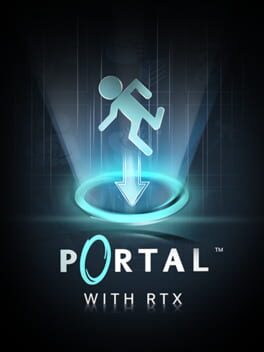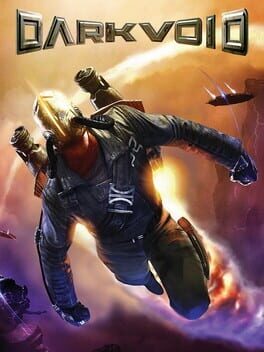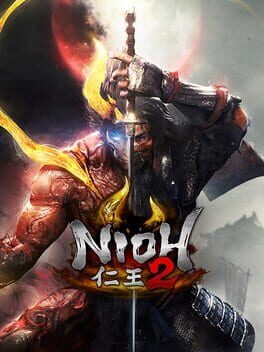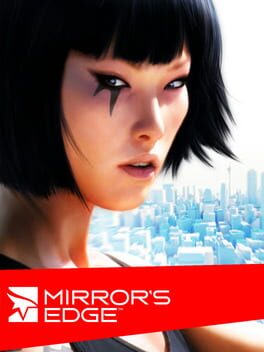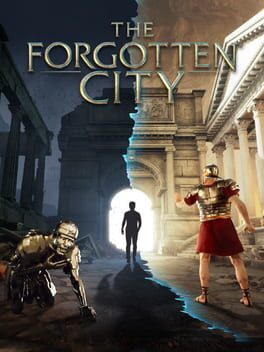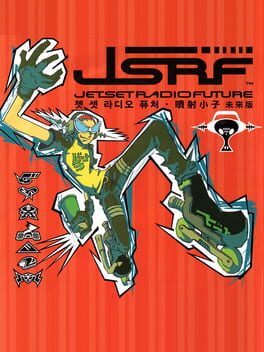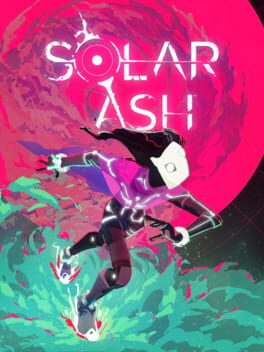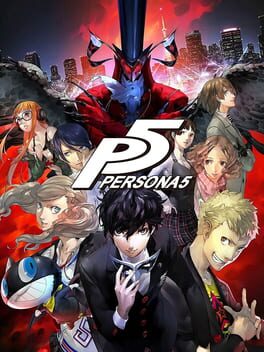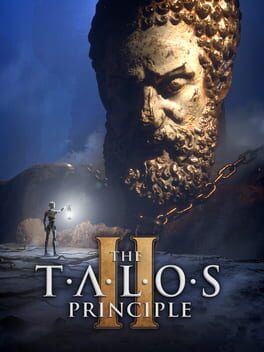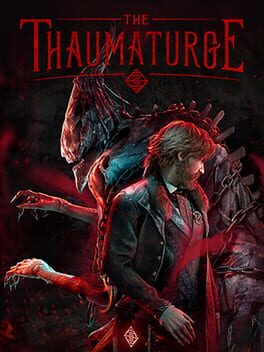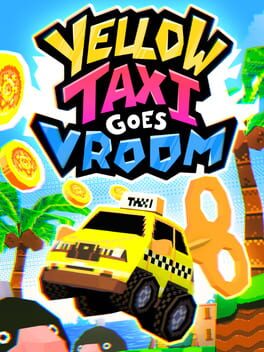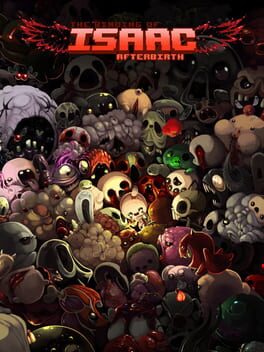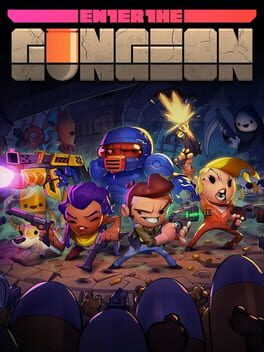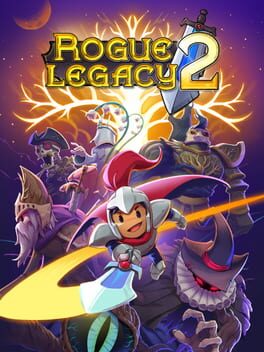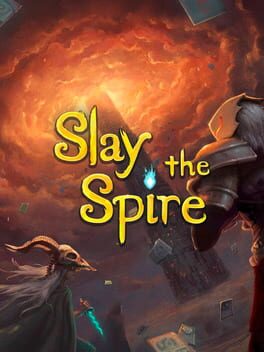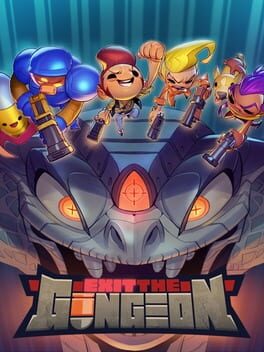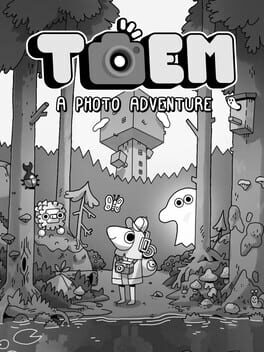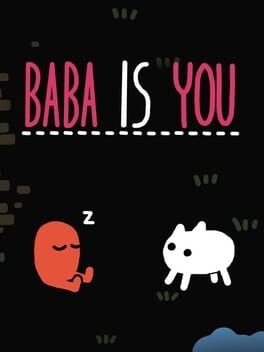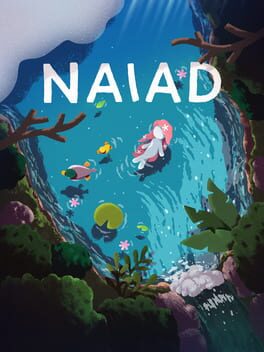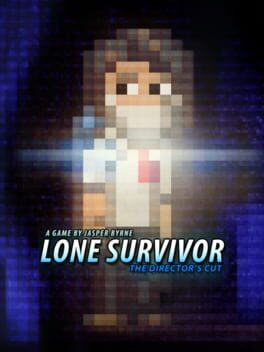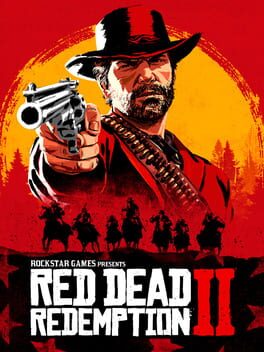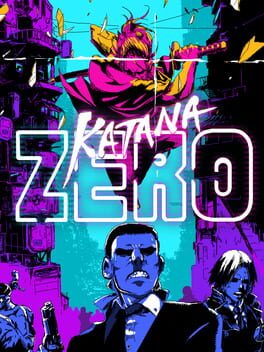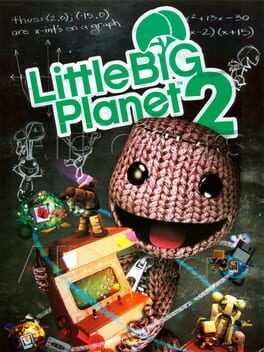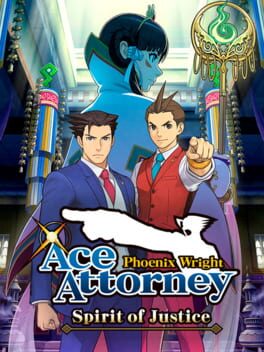763 reviews liked by Kujin
Zuma Deluxe
2005
Lies of P
2023
In Video Games, the line between a knock off and an innovative continuation is often razor fine. The amount of great games labeled with the words Doom Clone or God of War rip off over the years are more than enough evidence for that. The very nature of the medium being interactive makes them benefit from clear structures and system after all. Structures and systems that can be easily applied across multiple titles, so it's no surprise you would borrow heavily from existing elements. Even with all that, there is an understandable negative reaction to seeing whole UI designs and set pieces shamelessly ripped off. And I have always struggled the question if I should just condemn that or look past it as embarrassing inspiration. Lies of P was the ultimate test for me, as someone who has spent hundreds of hours with FromSoftware's flagship series and knows a lot of its ins and outs by heart. I was rolling my eyes at similarity just for the sake of it, only for the game to turn around and smack me across the face with the answer: Yes, you can not only heavily ripoff your idols, you can use that as a springboard to transcend them.
As the first big budget title of Korean developer Neowiz, Lies of P takes from the literary work of Italian author Carlo Collodi's famous Pinocchio story. Although this is less of a 1:1 adaptation, and more a jumping off point to take the moral lessons of that story in order to explore deeper themes like ethics and transhumanism. And the further I descended into the city of Krat, the deeper the rabbit hole got, as I noticed the literary references and themes pile up to construct a cohesive world with immaculate world building. From I what I could find, this seems to be writer and director Choi Ji-Wons first big budget gig and I can only applaud his skill at weaving an absolutely inspired setting out of what is a patch work job of his big inspirations. There are clear references to the works of Oscar Wilde and the sci-fi stories of Isaac Asimov and Philip K. Dick. Even classic anime like Full Metal Alchemist and Ghost in the Shell find their way into the city of Krat. Of course, there are also countless parallels to FromSoftwares own catalog with themes of mortality, how some are willing to seemingly doom the entire world for their ability to cheat fate and if there can even be some kind of some kind of moral or ethical justification for those very decisions. It's masterfully crafted, and I'm far from done sifting through its dense lore, a feeling I honestly haven't experienced since first diving into the original Dark Souls trilogy.
Just as important as the lore in a game, is its soundtrack wich turned out to be a mixed bag. And I can clearly separate the music in two very distinct categories. There is of course the non-diegetic soundtrack, which consists of your typical biblical choirs that play during big boss fights. Their epic, their bombastic and honestly something I'm really tired of. I couldn't pick them out of line up even if you held a gun to my head. I miss the days when boss themes in this genre had interesting compositions, like the theme of Lord Gwyn or Seath the scaleless from Dark Souls 1. What is exceptional however is the diegetic music played throughout the game. There are vinyl records to collect that can be listened to in the hub while you do your typical busywork like level up or weapon upgrades. They can also be heard throughout various places in Krat. Fitting with the city's theme of being heavily inspired by french culture, they consist of classical melodies with french lyrics, actually sung by Korean Artists. Which gives them an additional lair of other worldliness while you traverse the ruined streets of Krat. It's a style that I would love to see composer Yeakun Yoo develop further if he hopefully sticks with composing another Video Game.
On the gameplay front, Lies of P is also the closest one can get to ever matching FromSoftware's Souls formula. It's a true grab bag of all the modern FromSoftware mechanics. From the basic 1 vs 1 combat against bigger foes, to the aggressive tug of war that was introduced in Bloodborn that encourages you to get health back by fighting aggressively. Mechanical Lies of P is more than excellent. It's finally a soul-like that puts heavy weight behind your build decisions. To the point where the game makes it incredibly easy to respec your character. You're incentivised to experiment with all the options given, while also immediately teaching you the benefits of learning how to get enemies to stagger and parry their attacks. From increasing the chance of giving enemies fatal hits, to being able to negate damage entirely and even breaking their weapons. Of course, your weapons can break as well, with you having to repair them mid-battle leading to tens moments. This creates a wonderul tug of war where you're on equal footing with most enemies. I enjoyed those moments immensely where you decide to stick with parrying a flurry of attacks, get them to stagger for a fatal blow and using his recovering time to repair your weapon before jumping back into the battle. The dodge roll does exist, and can even be upgraded further, but unlike its inspirations it tends to be entirely situational. There is a prosthetic arm as well, ripped straight from Sekiro, that opens additional combat options. Among other things, you get a hook shoot to pull enemies towards you, a flamethrower and an arm canon. This result in a variety list of combat options while still being able to design everything around a few core mechanics. And those mechanics are used in some of the best boss fights in my opinion, with them even outdoing a FromSoftware staple. Twice. A 4 vs 1 fight that doesn't suck and gives you the option to even the odds in multiple ways. If I had to pick, those fights might be my overall favorites in the game, both in how they are build up from the very beginning of the game and then when the game finally pulls the trigger. It's the pinnacle of what I think Lies of P can achieve when it moves beyond its slavish devotion to Miyazaki's work. With spectacular results.
The other side of that devotion is all the parts where the game's falters, often in the exact same ways as Fromsoft. I found most of its last third to be a bland slog. Locations that conceptually should be fantastic, but fall flat in execution. In a game based around the concept of living puppets and philosophical questions about what makes one human or what a conscience even is, a graveyard of discarded puppets should be amazing. But it turned out to be one of several uninspired locations that had me just run through them blindly, not regretting that decision for a second. And one of several poison swamps Lies of P throws you into aswell, bringing the game's stellar quality down for me. Myazaki really put the brainworm in developers heads with his poison swamp obsession for all eternity. Please, stop it, get some help.
And as overall polished as combat is, even Neowiz could not iron out all of the typical souls like issues. I'm willing to cut them some slag as it's their first big title, but in the last third these issues just piled up in a way I could not ignore anymore. The camera getting stuck in smaller areas, enemies that spam you with status effects and predictable ambushes that stopped being surprising 10 years ago. If it was just a single area, that be fine, but it's a consistend drop off in quality right until the very end of the game. It really is a case where the setting and gameplay systems carried me through to the “final boss”. I'm saying final boss in quotes because I didn't actually get to fight the true final boss. For some reason, Neowiz decided to grab one of the worst decisions Fromsoftware themselves made in Blooborn and copy it. Hiding the real final boss behind an arbitrary decision with no warning, that you can't go back on. Setting aside the fact that NG+ seems to add some more lore elements and gear, from what little I played at least, I think locking a main path story boss behind another full play through has never set right with me. I just think its bad design. And I really was going to lower the score based on that alone.... Then the post credit scene happened. Needless to say, I'm beyond excited for Neowizes next game. It's a stinger hinted throughout all the game, and then they just confirm it with “yep, we are doing THAT” during the post credit scene. I'm here, my wallet is ready.
As the first big budget title of Korean developer Neowiz, Lies of P takes from the literary work of Italian author Carlo Collodi's famous Pinocchio story. Although this is less of a 1:1 adaptation, and more a jumping off point to take the moral lessons of that story in order to explore deeper themes like ethics and transhumanism. And the further I descended into the city of Krat, the deeper the rabbit hole got, as I noticed the literary references and themes pile up to construct a cohesive world with immaculate world building. From I what I could find, this seems to be writer and director Choi Ji-Wons first big budget gig and I can only applaud his skill at weaving an absolutely inspired setting out of what is a patch work job of his big inspirations. There are clear references to the works of Oscar Wilde and the sci-fi stories of Isaac Asimov and Philip K. Dick. Even classic anime like Full Metal Alchemist and Ghost in the Shell find their way into the city of Krat. Of course, there are also countless parallels to FromSoftwares own catalog with themes of mortality, how some are willing to seemingly doom the entire world for their ability to cheat fate and if there can even be some kind of some kind of moral or ethical justification for those very decisions. It's masterfully crafted, and I'm far from done sifting through its dense lore, a feeling I honestly haven't experienced since first diving into the original Dark Souls trilogy.
Just as important as the lore in a game, is its soundtrack wich turned out to be a mixed bag. And I can clearly separate the music in two very distinct categories. There is of course the non-diegetic soundtrack, which consists of your typical biblical choirs that play during big boss fights. Their epic, their bombastic and honestly something I'm really tired of. I couldn't pick them out of line up even if you held a gun to my head. I miss the days when boss themes in this genre had interesting compositions, like the theme of Lord Gwyn or Seath the scaleless from Dark Souls 1. What is exceptional however is the diegetic music played throughout the game. There are vinyl records to collect that can be listened to in the hub while you do your typical busywork like level up or weapon upgrades. They can also be heard throughout various places in Krat. Fitting with the city's theme of being heavily inspired by french culture, they consist of classical melodies with french lyrics, actually sung by Korean Artists. Which gives them an additional lair of other worldliness while you traverse the ruined streets of Krat. It's a style that I would love to see composer Yeakun Yoo develop further if he hopefully sticks with composing another Video Game.
On the gameplay front, Lies of P is also the closest one can get to ever matching FromSoftware's Souls formula. It's a true grab bag of all the modern FromSoftware mechanics. From the basic 1 vs 1 combat against bigger foes, to the aggressive tug of war that was introduced in Bloodborn that encourages you to get health back by fighting aggressively. Mechanical Lies of P is more than excellent. It's finally a soul-like that puts heavy weight behind your build decisions. To the point where the game makes it incredibly easy to respec your character. You're incentivised to experiment with all the options given, while also immediately teaching you the benefits of learning how to get enemies to stagger and parry their attacks. From increasing the chance of giving enemies fatal hits, to being able to negate damage entirely and even breaking their weapons. Of course, your weapons can break as well, with you having to repair them mid-battle leading to tens moments. This creates a wonderul tug of war where you're on equal footing with most enemies. I enjoyed those moments immensely where you decide to stick with parrying a flurry of attacks, get them to stagger for a fatal blow and using his recovering time to repair your weapon before jumping back into the battle. The dodge roll does exist, and can even be upgraded further, but unlike its inspirations it tends to be entirely situational. There is a prosthetic arm as well, ripped straight from Sekiro, that opens additional combat options. Among other things, you get a hook shoot to pull enemies towards you, a flamethrower and an arm canon. This result in a variety list of combat options while still being able to design everything around a few core mechanics. And those mechanics are used in some of the best boss fights in my opinion, with them even outdoing a FromSoftware staple. Twice. A 4 vs 1 fight that doesn't suck and gives you the option to even the odds in multiple ways. If I had to pick, those fights might be my overall favorites in the game, both in how they are build up from the very beginning of the game and then when the game finally pulls the trigger. It's the pinnacle of what I think Lies of P can achieve when it moves beyond its slavish devotion to Miyazaki's work. With spectacular results.
The other side of that devotion is all the parts where the game's falters, often in the exact same ways as Fromsoft. I found most of its last third to be a bland slog. Locations that conceptually should be fantastic, but fall flat in execution. In a game based around the concept of living puppets and philosophical questions about what makes one human or what a conscience even is, a graveyard of discarded puppets should be amazing. But it turned out to be one of several uninspired locations that had me just run through them blindly, not regretting that decision for a second. And one of several poison swamps Lies of P throws you into aswell, bringing the game's stellar quality down for me. Myazaki really put the brainworm in developers heads with his poison swamp obsession for all eternity. Please, stop it, get some help.
And as overall polished as combat is, even Neowiz could not iron out all of the typical souls like issues. I'm willing to cut them some slag as it's their first big title, but in the last third these issues just piled up in a way I could not ignore anymore. The camera getting stuck in smaller areas, enemies that spam you with status effects and predictable ambushes that stopped being surprising 10 years ago. If it was just a single area, that be fine, but it's a consistend drop off in quality right until the very end of the game. It really is a case where the setting and gameplay systems carried me through to the “final boss”. I'm saying final boss in quotes because I didn't actually get to fight the true final boss. For some reason, Neowiz decided to grab one of the worst decisions Fromsoftware themselves made in Blooborn and copy it. Hiding the real final boss behind an arbitrary decision with no warning, that you can't go back on. Setting aside the fact that NG+ seems to add some more lore elements and gear, from what little I played at least, I think locking a main path story boss behind another full play through has never set right with me. I just think its bad design. And I really was going to lower the score based on that alone.... Then the post credit scene happened. Needless to say, I'm beyond excited for Neowizes next game. It's a stinger hinted throughout all the game, and then they just confirm it with “yep, we are doing THAT” during the post credit scene. I'm here, my wallet is ready.
Portal with RTX
2022
This has to be the funniest marketing gimmick ever made. Honestly. It makes the Hatsune Miku Dominos promotion or the Saint's Row 4 ultimate edition seem tame.
For starters, it's just a copy of Portal with an RTX Remix injector bundled on. It comes with the dev menu.If you want to play Portal 1 for free you can get this, push Alt+X and disable everything. [This ended up not being true, I forgot that I owned Portal 1.]
But if you want to actually experience the shitshow that is Portal With RTX, you can also just open the menu and undo the shitty DLSS upscaler preset the game comes with. Setting it to any of the normal presets massively boosts performance. Yes, the default settings are an attempt to convey to laymen that their RTX card isn't good enough and they need a better one.
As for the actual game, it's a fascinating look into the minds of people obsessed with 'graphics' as a concept to such an extent that it becomes a detriment.
Portal With RTX looks terrible. Just absolute dogshit. I think whoever signed off on this should be forced to do a Drama course in University using only Garry's Mod models and lighting.
The original Portal has a very intentional, meticulously refined aesthetic. It is very bright, cold, and unwelcoming. Almost nothing in Aperture is rounded, with most of the geometry being angular brutalist walls and panels that look about as inviting as a field of landmines. It's very obvious just from 5-10 minutes of Portal that nothing lives in Aperture and nobody has been there in ages. Later on, you literally pull back the curtain of the testing chambers and run through back corridors, maintenance shafts and warehouses which completely turn the aesthetic on its head... By design. Intent. Yes, that's the word we're focusing on: 'Intent'.
Because Portal With RTX takes a sledgehammer to that meticuously crafted aesthetic. Chambers are now much darker, being lit up by overtuned light sources cast by either the few ambient lights, the lights bolted onto doors, or the red buttons. The latter in particular bathe everything in a sickening red glow that's so overdone it makes many Garry's Mod maps seem like professional work. There isn't really much of a difference now between the chambers and the lategame areas as a result.
But.
But.
There's a worse problem.
Whenever I talk about game design to people I'm friends with, I will more likely than not bring up Valve's amazing ability to signpost things without explicitly having a character say "go here", or having a big flashing arrow on the HUD telling you where to go. Most of the time they'll simply have lights, a literal sign, or clever lighting to guide you. Portal 1 in particular was great for this.
Portal With RTX is horrible. The 'modern' lighting gives equal importance to everything, and in a game where the lighting was handcrafted, this means player guidance is at an all time low. I cannot imagine this being your first experience with Portal, or Valve games.
Now, I'm a Portal autist, if you put a gun to my head and told me to run this game blindfolded, I'd be done before you had the gun loaded. For someone whose first experience with Portal is this game, though? They're in for a world of hurt, because in some chambers the lighting is so bad that it can be difficult to see cubes or doors at first. The later areas are sometimes pitch black, which is an awful statement to make about a mod for a game where nothing is pitch black BY DESIGN.
When I say "This is just Portal 1 with an RTX injector", there's no word of a lie there...
...Which means the developer commentary is still there. Yes, you can listen to the minds at Valve Software elucidate you as to how they very intentionally, carefully and almost neurotically tailored every single aspect of this game to perfection, all while playing a mod that's about as carefully created as AI art.
And you know what? AI art is a good comparison, because this feels like AI art. There's no regard for design, or consistency, or that magical keyword intent. Just a manic, soul-destroying fixation on 'looking good'. Beauty doesn't have to mean anything to these people, it just has to look good at a cursory glance. Spiritually, there's no difference between this... """product""", and going onto Midjourney and typing "portal realistic". This is very clearly a product made by and targeted at an audience for whom the word 'better' automatically means 'prettier'.
I was neutral on raytracing before actually getting a card capable of it, not really caring for the whole debate. I found devout shooters of it to be annoying, and devout haters of it to be wasting their time on what I perceived as the little brother to PhysX and HairWorks - two of Nvidia's other gimmicks that everyone replicated with ease.
After this, and seeing how ineffectual it is in Cyberpunk 2077/Mechwarrior 5/Resident Evil 4? Raytracing is a scam, dude. You can do better shit with Reshade, and it's free.
The original Portal is ten dollars. On sale, it usually becomes a dollar. Go play that instead.
For starters, it's just a copy of Portal with an RTX Remix injector bundled on. It comes with the dev menu.
But if you want to actually experience the shitshow that is Portal With RTX, you can also just open the menu and undo the shitty DLSS upscaler preset the game comes with. Setting it to any of the normal presets massively boosts performance. Yes, the default settings are an attempt to convey to laymen that their RTX card isn't good enough and they need a better one.
As for the actual game, it's a fascinating look into the minds of people obsessed with 'graphics' as a concept to such an extent that it becomes a detriment.
Portal With RTX looks terrible. Just absolute dogshit. I think whoever signed off on this should be forced to do a Drama course in University using only Garry's Mod models and lighting.
The original Portal has a very intentional, meticulously refined aesthetic. It is very bright, cold, and unwelcoming. Almost nothing in Aperture is rounded, with most of the geometry being angular brutalist walls and panels that look about as inviting as a field of landmines. It's very obvious just from 5-10 minutes of Portal that nothing lives in Aperture and nobody has been there in ages. Later on, you literally pull back the curtain of the testing chambers and run through back corridors, maintenance shafts and warehouses which completely turn the aesthetic on its head... By design. Intent. Yes, that's the word we're focusing on: 'Intent'.
Because Portal With RTX takes a sledgehammer to that meticuously crafted aesthetic. Chambers are now much darker, being lit up by overtuned light sources cast by either the few ambient lights, the lights bolted onto doors, or the red buttons. The latter in particular bathe everything in a sickening red glow that's so overdone it makes many Garry's Mod maps seem like professional work. There isn't really much of a difference now between the chambers and the lategame areas as a result.
But.
But.
There's a worse problem.
Whenever I talk about game design to people I'm friends with, I will more likely than not bring up Valve's amazing ability to signpost things without explicitly having a character say "go here", or having a big flashing arrow on the HUD telling you where to go. Most of the time they'll simply have lights, a literal sign, or clever lighting to guide you. Portal 1 in particular was great for this.
Portal With RTX is horrible. The 'modern' lighting gives equal importance to everything, and in a game where the lighting was handcrafted, this means player guidance is at an all time low. I cannot imagine this being your first experience with Portal, or Valve games.
Now, I'm a Portal autist, if you put a gun to my head and told me to run this game blindfolded, I'd be done before you had the gun loaded. For someone whose first experience with Portal is this game, though? They're in for a world of hurt, because in some chambers the lighting is so bad that it can be difficult to see cubes or doors at first. The later areas are sometimes pitch black, which is an awful statement to make about a mod for a game where nothing is pitch black BY DESIGN.
When I say "This is just Portal 1 with an RTX injector", there's no word of a lie there...
...Which means the developer commentary is still there. Yes, you can listen to the minds at Valve Software elucidate you as to how they very intentionally, carefully and almost neurotically tailored every single aspect of this game to perfection, all while playing a mod that's about as carefully created as AI art.
And you know what? AI art is a good comparison, because this feels like AI art. There's no regard for design, or consistency, or that magical keyword intent. Just a manic, soul-destroying fixation on 'looking good'. Beauty doesn't have to mean anything to these people, it just has to look good at a cursory glance. Spiritually, there's no difference between this... """product""", and going onto Midjourney and typing "portal realistic". This is very clearly a product made by and targeted at an audience for whom the word 'better' automatically means 'prettier'.
I was neutral on raytracing before actually getting a card capable of it, not really caring for the whole debate. I found devout shooters of it to be annoying, and devout haters of it to be wasting their time on what I perceived as the little brother to PhysX and HairWorks - two of Nvidia's other gimmicks that everyone replicated with ease.
After this, and seeing how ineffectual it is in Cyberpunk 2077/Mechwarrior 5/Resident Evil 4? Raytracing is a scam, dude. You can do better shit with Reshade, and it's free.
The original Portal is ten dollars. On sale, it usually becomes a dollar. Go play that instead.
Just gonna use this entry to review all three packs contained within, both to save on space/time and because Backloggd still doesn't have the 6th DLC listed.
The Battle of Onigashima Pack is... Honestly? Probably the worst one.
Despite what the marketing said, and what OP knowledge might have you believe, the star of the show is my beautiful he/her transmasc husband Yamato. He's an incredibly strong Power type with high-damaging, high-range specials and an extra damage multiplier in FFB mode on top of the existing one.
Where he really shines is with his unique transformation, which turns him into a gorgeous wolf man with digitigrade legs- er, and also makes him a lightning-fast Speed type with crazy range and damage compared to other Speed types. The transformed specials stand out; despite being relatively boring to look at they hit like trucks and recharge scary fast. Overall, best character of the pack.
Onigashima Luffy is somewhat of a disappointment. His base form is a reskin of the post-timeskip Luffy that comes with the basgame - but with a coat. He can transform into Gear 5 which is... It's a fun transform, very strong, has some of Omega Force's most gorgeous animations, but as a transform it's very rigid and can't be customized. You can prolong it indefinitely by maintaining a combo, but as a Sky type it functionally only has one combo set which makes it a bore.
Hybrid Kaido is an odd character. The basegame Kaido was very obviously made years before Wano hit its peak and this DLC version is essentially a rebuild. He now has many of his late Wano moves which is great, but he's rather unwieldy as a Speed-type Giant, not to mention his air combos force him into his Dragon state and are equally unwieldy. Really, the real gripe I have with him is that he's just all around worse than the Kaido you can play as without buying DLC.
Anyway, onto the Film Red Pack which hilariously used to be the worst.
The reasoning for this is that Uta, the pack's flagship character, sucked. Like, god she sucked. She had worse damage than the other shitters like Chopper, Bege or Bartolomeo along with an underwhelming transformation, awful range and wimpy specials.
Mercifully we live in a world of patches and she was fixed when the next DLC came out.
Uta, nowadays, is one of the better Technique types - on par with Kin'emon and only second to Rayleigh. Her damage is exceptional for her typing and the various changes they've made to her effects, spawnable traps and specials mean she's now got enough power behind her to actually carry her through the harder stuff released in the other DLC pass.
As for Film Red Shanks, you can honestly just consult the Hybrid Kaido section because the same complaints apply. It seems as though he's made for people who can't get a handle on the original Shanks' gimmick (wherein finishing a light string with him empowers his next finisher), seeing as going FFB gives him haki empowerment for its duration. He also has that infuriating issue so many Speed types have wherein his attacks can overshoot his position, meaning followups will miss if you're attacking an armored enemy.
Fortunately the pack is worth it for one character: Koby. I was excited for him more than the other two because he's one of my favourite characters in the source material, but that excitement turned to apprehension when I found out he was a summon character like Bege or Cracker.
Good news, though, is that he's fantastic. I always wanted the Six Powers to get another rep besides Lucci and he delivers. He's fast, impactful and very fun to play - plus his summons don't feel intrusive. FFB just makes them even better, and his Film Red outfit has a button dedicated to a dramatic Yakuza-esque coat toss. Hey, he even comes with his non-movie outfit! Surprising.
Nothing fancy to say here, he's just *good.
Now onto the last pack, where much of the Sauce was saved: The Legend Dawn Pack is... Cheats! Hurray!
Gol D. Roger is as you'd expect from a character with so much in-story mythos as him. Kinda reminds me of my Xenoverse 2 modding days, where so many custom characters had obscene guard breaks and stamina drain on their normals. Though he's not a Giant type, he still shreds the armor gauge like crazy and possesses ludicrous range. His charge attacks can be... well, charged [Isn't it annoying that they're called that despite most characters not being able to charge them up?] but FFB removes the need to do this.
When I say "Legend Dawn is cheats", I mostly mean Roger. He's easily the second best character in the game, behind Whitebeard. Also his taunt lets you put his hat on which is ADORABLE.
Rayleigh is my personal favourite of the three, though. Once again he's one of my favs from the manga, for despite being a lesbian I am NOT immune to a fruity old man.
You know that thing annoying Shonen powerscalers do where they look at an old/injured/retired character and go "Yooooo imagine him in his prime though"? Yeah well Rayleigh in this game is that to a T.
He's a Technique type yes, but in function he plays like a Power type. His entire shtick as an old man is his obscenely powerful and refined use of haki, and his younger self in this game shows it off by doing what I can only describe as some Vergil-tier shit.
It's really telling that, while other characters with Conqueror's Haki have access to a special known only as "Conqueror's Haki", Rayleigh's is so fucking powerful that his special has its own name.
Garp, meanwhile, is something of a disappointment. He's a weird hybrid of his PW3 grappler moveset and a newer brawler moveset with some annoying mechanics. Namely, grapples bounce off of armored characters, and he has a sword buff mechanic like Shanks/FR Shanks/Oden/Mihawk/Smoothie but unlike those characters, it's given based on hit count - which is a problem for a character with low range and relatively few multi-hist.
Honestly, his real issue is that Power as a type is super crowded in terms of good characters, and compared to them he's far down the ladder. Don't get me wrong, he still clears half the roster, but when that half has characters like Tashigi/Bege/Chopper/Sanji/Bartolomeo in it, it's not much of an accomplishment.
Also this is petty but his younger look is kinda goofy, where's my GILF skin Koei.
To summarise: Do I like this pass more than the first one? Mostly yeah. Land of Wano (CP1's last pack) is my favourite of the DLCs, but the 2nd/3rd/4th place slots are occupied entirely by CP2. The rise in quality is just absurd, in part because these characters are less obviously cut from the base roster to be sold later.
I would say "here's to more DLC", but I think this game is finished. It's been a great run all things considered, so here's to a PW5 that hopefully BRINGS BACK KUMA WHY DID YOU CUT HIM YOU MANIACS-
[Writer was dragged off stage.]
The Battle of Onigashima Pack is... Honestly? Probably the worst one.
Despite what the marketing said, and what OP knowledge might have you believe, the star of the show is my beautiful he/her transmasc husband Yamato. He's an incredibly strong Power type with high-damaging, high-range specials and an extra damage multiplier in FFB mode on top of the existing one.
Where he really shines is with his unique transformation, which turns him into a gorgeous wolf man with digitigrade legs- er, and also makes him a lightning-fast Speed type with crazy range and damage compared to other Speed types. The transformed specials stand out; despite being relatively boring to look at they hit like trucks and recharge scary fast. Overall, best character of the pack.
Onigashima Luffy is somewhat of a disappointment. His base form is a reskin of the post-timeskip Luffy that comes with the basgame - but with a coat. He can transform into Gear 5 which is... It's a fun transform, very strong, has some of Omega Force's most gorgeous animations, but as a transform it's very rigid and can't be customized. You can prolong it indefinitely by maintaining a combo, but as a Sky type it functionally only has one combo set which makes it a bore.
Hybrid Kaido is an odd character. The basegame Kaido was very obviously made years before Wano hit its peak and this DLC version is essentially a rebuild. He now has many of his late Wano moves which is great, but he's rather unwieldy as a Speed-type Giant, not to mention his air combos force him into his Dragon state and are equally unwieldy. Really, the real gripe I have with him is that he's just all around worse than the Kaido you can play as without buying DLC.
Anyway, onto the Film Red Pack which hilariously used to be the worst.
The reasoning for this is that Uta, the pack's flagship character, sucked. Like, god she sucked. She had worse damage than the other shitters like Chopper, Bege or Bartolomeo along with an underwhelming transformation, awful range and wimpy specials.
Mercifully we live in a world of patches and she was fixed when the next DLC came out.
Uta, nowadays, is one of the better Technique types - on par with Kin'emon and only second to Rayleigh. Her damage is exceptional for her typing and the various changes they've made to her effects, spawnable traps and specials mean she's now got enough power behind her to actually carry her through the harder stuff released in the other DLC pass.
As for Film Red Shanks, you can honestly just consult the Hybrid Kaido section because the same complaints apply. It seems as though he's made for people who can't get a handle on the original Shanks' gimmick (wherein finishing a light string with him empowers his next finisher), seeing as going FFB gives him haki empowerment for its duration. He also has that infuriating issue so many Speed types have wherein his attacks can overshoot his position, meaning followups will miss if you're attacking an armored enemy.
Fortunately the pack is worth it for one character: Koby. I was excited for him more than the other two because he's one of my favourite characters in the source material, but that excitement turned to apprehension when I found out he was a summon character like Bege or Cracker.
Good news, though, is that he's fantastic. I always wanted the Six Powers to get another rep besides Lucci and he delivers. He's fast, impactful and very fun to play - plus his summons don't feel intrusive. FFB just makes them even better, and his Film Red outfit has a button dedicated to a dramatic Yakuza-esque coat toss. Hey, he even comes with his non-movie outfit! Surprising.
Nothing fancy to say here, he's just *good.
Now onto the last pack, where much of the Sauce was saved: The Legend Dawn Pack is... Cheats! Hurray!
Gol D. Roger is as you'd expect from a character with so much in-story mythos as him. Kinda reminds me of my Xenoverse 2 modding days, where so many custom characters had obscene guard breaks and stamina drain on their normals. Though he's not a Giant type, he still shreds the armor gauge like crazy and possesses ludicrous range. His charge attacks can be... well, charged [Isn't it annoying that they're called that despite most characters not being able to charge them up?] but FFB removes the need to do this.
When I say "Legend Dawn is cheats", I mostly mean Roger. He's easily the second best character in the game, behind Whitebeard. Also his taunt lets you put his hat on which is ADORABLE.
Rayleigh is my personal favourite of the three, though. Once again he's one of my favs from the manga, for despite being a lesbian I am NOT immune to a fruity old man.
You know that thing annoying Shonen powerscalers do where they look at an old/injured/retired character and go "Yooooo imagine him in his prime though"? Yeah well Rayleigh in this game is that to a T.
He's a Technique type yes, but in function he plays like a Power type. His entire shtick as an old man is his obscenely powerful and refined use of haki, and his younger self in this game shows it off by doing what I can only describe as some Vergil-tier shit.
It's really telling that, while other characters with Conqueror's Haki have access to a special known only as "Conqueror's Haki", Rayleigh's is so fucking powerful that his special has its own name.
Garp, meanwhile, is something of a disappointment. He's a weird hybrid of his PW3 grappler moveset and a newer brawler moveset with some annoying mechanics. Namely, grapples bounce off of armored characters, and he has a sword buff mechanic like Shanks/FR Shanks/Oden/Mihawk/Smoothie but unlike those characters, it's given based on hit count - which is a problem for a character with low range and relatively few multi-hist.
Honestly, his real issue is that Power as a type is super crowded in terms of good characters, and compared to them he's far down the ladder. Don't get me wrong, he still clears half the roster, but when that half has characters like Tashigi/Bege/Chopper/Sanji/Bartolomeo in it, it's not much of an accomplishment.
Also this is petty but his younger look is kinda goofy, where's my GILF skin Koei.
To summarise: Do I like this pass more than the first one? Mostly yeah. Land of Wano (CP1's last pack) is my favourite of the DLCs, but the 2nd/3rd/4th place slots are occupied entirely by CP2. The rise in quality is just absurd, in part because these characters are less obviously cut from the base roster to be sold later.
I would say "here's to more DLC", but I think this game is finished. It's been a great run all things considered, so here's to a PW5 that hopefully BRINGS BACK KUMA WHY DID YOU CUT HIM YOU MANIACS-
[Writer was dragged off stage.]
Lies of P
2023
I think your mileage with this will heavily depend on how much you can forgive it for being so derivative, but I think in this case it’s worth forgiving. Personally, I have no problem with stealing souls systems like bonfires, estus, stamina management, parries, rallies etc. but there are points where I think Lies of P crosses a line: talking to sick people through windows, a not-fire-keeper calling you “clever one”, slowly pushing open heavy double-doors, the same damn item pickup and menu sounds, I think these kinds of choices are needlessly derivative and will only serve to remind people of other, better, games. A more thrifty approach could have taken the meat of souls without also taking the chaff. Even things like attacking, running and dodging animations are uncannily similar to fromsoft titles, which is a bit of a double-edged sword: On the one hand, this is one of the precious few souls copycats that actually feels great to play, because it takes the finely-tuned animation cadence of fromsoft so wholesale (the other souls copycat that feels good, Nioh, relies on the years of action game experience that Team Ninja has, so it’s maybe preferable for an inexperienced dev to simply steal in this case). The negative side of this is that everything which feels “off” or out of place will stick out all the more severely. Level design is pretty obviously inferior to fromsoft’s games, as linear as it is with a bunch of superfluous shortcuts, lacking the overlapping and layered tracks that define the best souls levels (ds3 undead settlement is a perfect example) and lacking any real side areas. But elsewhere I have to say that as the game went on, I found remarkably little to complain about: Environmental design and the art direction is alarmingly good for a debut game, enemy variety is surprisingly great - one of the critical things that separates good souls from mid souls, I was really taken aback by how the game has unique minibosses that are only used once or twice whereas basically every other souls copycat is defined by excessive reuse. The quality of the animations is universally top-notch, everything flows great and so many weapons have enjoyable movesets and bosses have subtle variations in their combos to signify what they’ll do next.
All creativity is about stealing to some extent, though this is admittedly on the more extreme end of that spectrum. Still, I think a fixation on its similarities - both superficial and meaningful - can cover up the actually original things that are here: Glossing over the neat durability and weapon-fusion mechanics, I love the parry/blocking system in this game and think it's an ingenious fusion of Sekiro and Bloodborne that actually improves both. The boon of Sekiro’s posture and parry mechanics was that it allowed bosses to have flashy, dynamic, extended blockstrings without feeling like you were just waiting for the boss to be done (i.e Elden Ring), because parrying those blockstrings did damage to the enemy. The flaw of Sekiro’s mechanics, for some people at least, was that parry was the only meaningful way to engage with a lot of situations, which Lies of P solves by requiring posture breaks to be activated by a charged heavy, forcing you into finding an opening and not just reacting with parries. Bloodborne, on the other hand, was all about hit-trading, thanks to its rally mechanic, and the boon of this was that getting hit was equally an opportunity just as much as it was a punishment, the flaw, however, was that in some cases it could promote mindlessly aggressive play, where you just hit-trade a boss to death without even trying to avoid their attacks (Bloodborne mostly got around this with clever enemy designs, but some bosses still have the problem). Lies of P fuses these two by locking the rally mechanic behind blocking, while retaining the parrying mechanics of Sekiro. The result is an interesting risk-reward pipeline: Risk a parry to get their posture down, if you miss and get a regular block, now you’re encouraged to go on the offensive to get that health back, getting hit is unequivocally bad and dodging remains very relevant as a repositioning tool. It’s interesting and, for me, very satisfying to engage with, though I wouldn’t say it’s perfect: It’s a little too insistent on parrying with the armour and tracking that bosses/elite enemies sometimes have, the fact that it doesn’t show you the posture bar so that you can’t factor in how close an enemy is to staggering into your decision-making also seems like an odd choice, and the “perilous attacks” beating both block and dodge can get a little ridiculous, but for the most part I really like the systems here.
The deciding factor for me is that the bosses in Lies of P are genuinely fantastic, all with loads of varied, amazingly animated attacks and interesting gimmicks, there are some lacklustre ones, especially the two lategame rematch bosses, but the run of bosses from Andreas with his side-switching gimmick, the Black Rabbits aka "O&S but with 3 different Ornsteins", King of Puppets, Victor and the Green Monster with the clever reuse of the Watchman is just banger after banger, they're all so creatively designed, and if I could commit some blasphemy real quick, I think this boss lineup is better than any other soulslike game, fromsoft included.
It comes with the caveat that this is a very difficult game. I love that, personally, the level of difficulty means that encounters demand you respect them and learn their moves rather than stumbling through, but it won’t be for everyone, and I think if you go in with the mindset that it’s just a copy, you’re not going to want to give it that respect. It’s a little sad that the general reception seems to be so lukewarm, and it’s hard to pinpoint whether this lies in the difficulty, the feeling that it’s a “knockoff”, a vindictive idea that any good soulslike is a threat to fromsoft, or just general fatigue with soulslikes. Regardless, a lot of the takes about how the game is unfair or feels “off” just don’t ring true to me at all; I think this is the real deal, it’s a damn good game, and I honestly find myself feeling that it’s going to be my GOTY, but hey, I loved Bloodborne and Sekiro, so it was probably a given that I would love a fusion of the two as well.
All creativity is about stealing to some extent, though this is admittedly on the more extreme end of that spectrum. Still, I think a fixation on its similarities - both superficial and meaningful - can cover up the actually original things that are here: Glossing over the neat durability and weapon-fusion mechanics, I love the parry/blocking system in this game and think it's an ingenious fusion of Sekiro and Bloodborne that actually improves both. The boon of Sekiro’s posture and parry mechanics was that it allowed bosses to have flashy, dynamic, extended blockstrings without feeling like you were just waiting for the boss to be done (i.e Elden Ring), because parrying those blockstrings did damage to the enemy. The flaw of Sekiro’s mechanics, for some people at least, was that parry was the only meaningful way to engage with a lot of situations, which Lies of P solves by requiring posture breaks to be activated by a charged heavy, forcing you into finding an opening and not just reacting with parries. Bloodborne, on the other hand, was all about hit-trading, thanks to its rally mechanic, and the boon of this was that getting hit was equally an opportunity just as much as it was a punishment, the flaw, however, was that in some cases it could promote mindlessly aggressive play, where you just hit-trade a boss to death without even trying to avoid their attacks (Bloodborne mostly got around this with clever enemy designs, but some bosses still have the problem). Lies of P fuses these two by locking the rally mechanic behind blocking, while retaining the parrying mechanics of Sekiro. The result is an interesting risk-reward pipeline: Risk a parry to get their posture down, if you miss and get a regular block, now you’re encouraged to go on the offensive to get that health back, getting hit is unequivocally bad and dodging remains very relevant as a repositioning tool. It’s interesting and, for me, very satisfying to engage with, though I wouldn’t say it’s perfect: It’s a little too insistent on parrying with the armour and tracking that bosses/elite enemies sometimes have, the fact that it doesn’t show you the posture bar so that you can’t factor in how close an enemy is to staggering into your decision-making also seems like an odd choice, and the “perilous attacks” beating both block and dodge can get a little ridiculous, but for the most part I really like the systems here.
The deciding factor for me is that the bosses in Lies of P are genuinely fantastic, all with loads of varied, amazingly animated attacks and interesting gimmicks, there are some lacklustre ones, especially the two lategame rematch bosses, but the run of bosses from Andreas with his side-switching gimmick, the Black Rabbits aka "O&S but with 3 different Ornsteins", King of Puppets, Victor and the Green Monster with the clever reuse of the Watchman is just banger after banger, they're all so creatively designed, and if I could commit some blasphemy real quick, I think this boss lineup is better than any other soulslike game, fromsoft included.
It comes with the caveat that this is a very difficult game. I love that, personally, the level of difficulty means that encounters demand you respect them and learn their moves rather than stumbling through, but it won’t be for everyone, and I think if you go in with the mindset that it’s just a copy, you’re not going to want to give it that respect. It’s a little sad that the general reception seems to be so lukewarm, and it’s hard to pinpoint whether this lies in the difficulty, the feeling that it’s a “knockoff”, a vindictive idea that any good soulslike is a threat to fromsoft, or just general fatigue with soulslikes. Regardless, a lot of the takes about how the game is unfair or feels “off” just don’t ring true to me at all; I think this is the real deal, it’s a damn good game, and I honestly find myself feeling that it’s going to be my GOTY, but hey, I loved Bloodborne and Sekiro, so it was probably a given that I would love a fusion of the two as well.
Lies of P
2023
The student becomes the master overnight.
Lies of P is a game that came completely out of nowhere, left no impression on me beyond "why would someone make a dark, moody game about Pinocchio", and then managed to completely eclipse every expectation I had. I got back on Game Pass for Starfield and PAYDAY 3, and decided to give this a crack solely as a might-as-well-try-it; not only is this the better of those, it's one of the finest games I've ever played. I mean this honestly and heretically: it is better than all three mainline entries of the Dark Souls series.
Yes, Lies of P is derivative. No, this does not detract from its quality. The obsession with "newness", both as an inherent virtue and as something all creators ought to strive for, is an ideal forced to take root almost exclusively at the behest of European bourgeois Romantics all looking to (ironically enough) copy what Rousseau was telling them to do in the 1700s. Art as a whole has spent centuries upon centuries cribbing from other pieces to put itself together, and it's a fairly recent development that doing shit that someone else did but in your own way is seen as a failure of the artist. I, personally, do not care about this in the slightest. If you do, I would ask only that you examine why you believe this to be so; do you have a legitimate grievance against derivative works for any reason other than because others have told you that they're some synonym for "bad"?
Round8 Studio has come almost completely out of nowhere to deliver something that's immensely fun to play, narratively engaging, and utterly gorgeous in just about every area you can find yourself in. Any developer that can come out swinging this hard and connect with just about every blow deserves to be celebrated. There's a lot to talk about, and certainly a lot of it is in regards to the way that people are talking about it. I'll get my core thesis out of the way, first:
If you like Dark Souls, you'll probably like this game.
If you've made liking Dark Souls into a defining personality trait of yours, you're going to fucking hate this game.
Lies of P rides a fine line of being distinct, but not different. The overlap between FromSoft's PS3-and-onward output is broad, borrowing bits and pieces and rearranging them around; something similar to Sekiro parries, something similar to a Bloodborne dodge, something similar to the Dark Souls 3 enemy ambushes. But Lies of P is distinct enough in its execution of these elements that long-time Souls players will unilaterally be chin-checked when they try bringing over their muscle memory from these other titles.
Perfect guards are a guard, not a parry, and tapping the block button Sekiro-style will make you eat a hit. The dodge offers fast, generous invincibility, but it's never as safe as the one in Bloodborne is; enemies using their big red attacks will cut through your i-frames by design, encouraging you to either parry or move well out of the way. Enemies will usually come in ones and be very obvious, but many will hide just out of sight in the hopes of clipping players who haven't yet been trained to look around before charging past a blind corner. The game is uncompromising in demanding the player to meet it on its terms, rather than copying wholesale from the games that obviously inspired it and allowing the skills you learned there to completely carry over.
If you try playing this exactly like every other FromSoft Souls game you've played up to this point, you will lose, and hard. If you can not (or will not) adapt, you will probably get filtered out by the Archbishop and start publicly wondering why anyone likes this game.
There's a very strange — and frankly, it feels borderline dishonest — set of complaints I've seen where people are just outright wrong about the way the game functions, and they then use their incorrect assumptions as a base from which to knock on the game. I've seen complaints that large weapons aren't viable because you don't get poise/super armor on heavy attacks; this is blatantly untrue, and charge attacks with heavy weapons will regularly blow straight through an enemy hit. People say the dodge is unreliable, but it really isn't; if you're getting caught, you're either messing up a (fairly generous) timing or you're getting hit by red fury attacks, which the game clearly tells you cannot be rolled through. People say it's an aesthetic rip-off of Bloodborne, and this really only applies to a couple of the eldritch enemies; Parisian streets, circus theming, and fantastical automatons lend to a pretty distinct visual identity from any of the other heavy-hitters in the genre.
People say the voice acting is bad, but most of the cast is made up of established, talented stage and screen actors returning from other games like Elden Ring and Xenoblade Chronicles 3, where their performances were lauded; they sound borderline identical to what they've done since just last year, so what makes it acceptable there, and laughable here? People say the translation is bad, but I only noticed a single grammar mistake and typo in my entire playthrough, and they were both buried in the flavor text of a gesture; the rest of the writing offered some evocative lines that managed to bounce between introspective, beautiful, and the coolest fucking thing I've ever read in my life. Where are these complaints coming from? Did we play the same game? It makes no sense. I'm losing my mind trying to figure out how anyone even came to most of these conclusions. It really feels like the most vocal naysayers only played enough of Lies of P to come up with a few surface observations and then made up the rest wholesale.
None of this is to imply that the game is without fault, because it isn't. Boss runs are still present in all of their vestigial glory, consistently adding a mandatory and boring twenty seconds before you can retry a failed boss attempt. Elite enemies — especially in the late game — are often such massive damage sponges that it's a complete waste of time and resources to actually bother fighting the ones that respawn. The breakpoint at which an enemy gets staggered is a hidden value, so you're always just hoping that the next perfect guard will be enough to trip it; we've already got visible enemy health bars here, so I can't see why we don't get enemy stamina bars, too. (Stranger of Paradise continues to be the most mechanically-complete game in this sub-genre.)
For these faults, though, there are at least as many quality-of-life changes that I'm astounded haven't been adopted elsewhere already. Emptying your pulse cells (your refillable healing item) allows you the opportunity to get one back for free if you can dish out enough damage. Theoretically, as long as you can keep up both your offense and defense, you have access to unlimited healing. It's such a natural extension of the Rally system, where you can heal chip damage by hitting foes; Bloodborne's implementation of blood vials looks completely misguided next to this. If you have enough Ergo to level up, the number in the top right corner of the screen will turn blue, no longer requiring you to manually check if you've got enough at a save point. When a side quest updates, the warp screen will let you know that something has happened, and where to start looking for the NPC that it happened to.
It's a challenging game, but it really isn't that hard. I do agree with the general consensus that it would be nice if the perfect guards could be granted a few extra frames of leniency. I managed to start hitting them fairly consistently around halfway through the game, but it's going to be a large hurdle that'll shoo off a lot of players who don't like such tight timings. Tuning it just a little bit would help to make it feel a bit more fair without completely compromising on the difficulty. Everything else, I feel, is pretty strongly balanced in the player's favor; I got through just about every boss in the game without summoning specters and without spending consumables, but they were all there for me if I really needed them. I'd like to go back and play through it again, knowing what I know now, and really lean into the item usage. It's not like you won't wind up with a surplus, considering how easy everything is to farm.
I understand that Bloodborne is something of a sacred cow, especially on this website — it's currently two of the top five highest-ranked games — so anything that seems like it's trying to encroach on its territory is going to be met with hostility before all else. I understand. It's a special game for a lot of people. That said, I'd suggest going into Lies of P with an open mind and a willingness to engage with the game on its own terms; you might manage to find it as impressive of a work as I do.
Quartz is stored in the P-Organ.
Lies of P is a game that came completely out of nowhere, left no impression on me beyond "why would someone make a dark, moody game about Pinocchio", and then managed to completely eclipse every expectation I had. I got back on Game Pass for Starfield and PAYDAY 3, and decided to give this a crack solely as a might-as-well-try-it; not only is this the better of those, it's one of the finest games I've ever played. I mean this honestly and heretically: it is better than all three mainline entries of the Dark Souls series.
Yes, Lies of P is derivative. No, this does not detract from its quality. The obsession with "newness", both as an inherent virtue and as something all creators ought to strive for, is an ideal forced to take root almost exclusively at the behest of European bourgeois Romantics all looking to (ironically enough) copy what Rousseau was telling them to do in the 1700s. Art as a whole has spent centuries upon centuries cribbing from other pieces to put itself together, and it's a fairly recent development that doing shit that someone else did but in your own way is seen as a failure of the artist. I, personally, do not care about this in the slightest. If you do, I would ask only that you examine why you believe this to be so; do you have a legitimate grievance against derivative works for any reason other than because others have told you that they're some synonym for "bad"?
Round8 Studio has come almost completely out of nowhere to deliver something that's immensely fun to play, narratively engaging, and utterly gorgeous in just about every area you can find yourself in. Any developer that can come out swinging this hard and connect with just about every blow deserves to be celebrated. There's a lot to talk about, and certainly a lot of it is in regards to the way that people are talking about it. I'll get my core thesis out of the way, first:
If you like Dark Souls, you'll probably like this game.
If you've made liking Dark Souls into a defining personality trait of yours, you're going to fucking hate this game.
Lies of P rides a fine line of being distinct, but not different. The overlap between FromSoft's PS3-and-onward output is broad, borrowing bits and pieces and rearranging them around; something similar to Sekiro parries, something similar to a Bloodborne dodge, something similar to the Dark Souls 3 enemy ambushes. But Lies of P is distinct enough in its execution of these elements that long-time Souls players will unilaterally be chin-checked when they try bringing over their muscle memory from these other titles.
Perfect guards are a guard, not a parry, and tapping the block button Sekiro-style will make you eat a hit. The dodge offers fast, generous invincibility, but it's never as safe as the one in Bloodborne is; enemies using their big red attacks will cut through your i-frames by design, encouraging you to either parry or move well out of the way. Enemies will usually come in ones and be very obvious, but many will hide just out of sight in the hopes of clipping players who haven't yet been trained to look around before charging past a blind corner. The game is uncompromising in demanding the player to meet it on its terms, rather than copying wholesale from the games that obviously inspired it and allowing the skills you learned there to completely carry over.
If you try playing this exactly like every other FromSoft Souls game you've played up to this point, you will lose, and hard. If you can not (or will not) adapt, you will probably get filtered out by the Archbishop and start publicly wondering why anyone likes this game.
There's a very strange — and frankly, it feels borderline dishonest — set of complaints I've seen where people are just outright wrong about the way the game functions, and they then use their incorrect assumptions as a base from which to knock on the game. I've seen complaints that large weapons aren't viable because you don't get poise/super armor on heavy attacks; this is blatantly untrue, and charge attacks with heavy weapons will regularly blow straight through an enemy hit. People say the dodge is unreliable, but it really isn't; if you're getting caught, you're either messing up a (fairly generous) timing or you're getting hit by red fury attacks, which the game clearly tells you cannot be rolled through. People say it's an aesthetic rip-off of Bloodborne, and this really only applies to a couple of the eldritch enemies; Parisian streets, circus theming, and fantastical automatons lend to a pretty distinct visual identity from any of the other heavy-hitters in the genre.
People say the voice acting is bad, but most of the cast is made up of established, talented stage and screen actors returning from other games like Elden Ring and Xenoblade Chronicles 3, where their performances were lauded; they sound borderline identical to what they've done since just last year, so what makes it acceptable there, and laughable here? People say the translation is bad, but I only noticed a single grammar mistake and typo in my entire playthrough, and they were both buried in the flavor text of a gesture; the rest of the writing offered some evocative lines that managed to bounce between introspective, beautiful, and the coolest fucking thing I've ever read in my life. Where are these complaints coming from? Did we play the same game? It makes no sense. I'm losing my mind trying to figure out how anyone even came to most of these conclusions. It really feels like the most vocal naysayers only played enough of Lies of P to come up with a few surface observations and then made up the rest wholesale.
None of this is to imply that the game is without fault, because it isn't. Boss runs are still present in all of their vestigial glory, consistently adding a mandatory and boring twenty seconds before you can retry a failed boss attempt. Elite enemies — especially in the late game — are often such massive damage sponges that it's a complete waste of time and resources to actually bother fighting the ones that respawn. The breakpoint at which an enemy gets staggered is a hidden value, so you're always just hoping that the next perfect guard will be enough to trip it; we've already got visible enemy health bars here, so I can't see why we don't get enemy stamina bars, too. (Stranger of Paradise continues to be the most mechanically-complete game in this sub-genre.)
For these faults, though, there are at least as many quality-of-life changes that I'm astounded haven't been adopted elsewhere already. Emptying your pulse cells (your refillable healing item) allows you the opportunity to get one back for free if you can dish out enough damage. Theoretically, as long as you can keep up both your offense and defense, you have access to unlimited healing. It's such a natural extension of the Rally system, where you can heal chip damage by hitting foes; Bloodborne's implementation of blood vials looks completely misguided next to this. If you have enough Ergo to level up, the number in the top right corner of the screen will turn blue, no longer requiring you to manually check if you've got enough at a save point. When a side quest updates, the warp screen will let you know that something has happened, and where to start looking for the NPC that it happened to.
It's a challenging game, but it really isn't that hard. I do agree with the general consensus that it would be nice if the perfect guards could be granted a few extra frames of leniency. I managed to start hitting them fairly consistently around halfway through the game, but it's going to be a large hurdle that'll shoo off a lot of players who don't like such tight timings. Tuning it just a little bit would help to make it feel a bit more fair without completely compromising on the difficulty. Everything else, I feel, is pretty strongly balanced in the player's favor; I got through just about every boss in the game without summoning specters and without spending consumables, but they were all there for me if I really needed them. I'd like to go back and play through it again, knowing what I know now, and really lean into the item usage. It's not like you won't wind up with a surplus, considering how easy everything is to farm.
I understand that Bloodborne is something of a sacred cow, especially on this website — it's currently two of the top five highest-ranked games — so anything that seems like it's trying to encroach on its territory is going to be met with hostility before all else. I understand. It's a special game for a lot of people. That said, I'd suggest going into Lies of P with an open mind and a willingness to engage with the game on its own terms; you might manage to find it as impressive of a work as I do.
Quartz is stored in the P-Organ.
When they announced this in a Direct, I got really excited for what it could be, seeing the theater aesthetic combined with a little bit of mahou shoujo energy, and also being a brand-new Peach game, so it felt like it was made for me. Then it came out, and after playing all the 1F levels, I honestly already gave up.
Lots of people point out that this game is "too easy" or "just made for kids" (I could go on a rant about this one part for hours, but I just want to keep things short), but I think that none of these have to do with the main problem. The thing is, this game is just built in a way that you are never really engaging with it. Everything is already solved, and the game is just waiting for you to press a button to conclude the "puzzle." All the cool ideas it has last so shortly or are affected by the previously mentioned principle that plagues it. All the stages are decorated in a way that tries to please you from a visual point, but they are no different from an empty one when you walk around them. It just kinda makes all of it worse with the fact that I played Ape Escape 3 this year, and it's kinda just the exact opposite of all of this? They share some motifs when building levels (a ninja-themed one, a cowboy one, etc.), but everything there is more tactile and feels alive. The monkeys around the stage are all doing their own thing relevant to the theme chosen for the level, while also changing how they respond to the player, be it with their attacks or positioning. So, while there it feels like you're actually playing a role and being a part of the show, in Peach Showtime, it just all feels like I'm watching things unfold and that's it.
Lots of people point out that this game is "too easy" or "just made for kids" (I could go on a rant about this one part for hours, but I just want to keep things short), but I think that none of these have to do with the main problem. The thing is, this game is just built in a way that you are never really engaging with it. Everything is already solved, and the game is just waiting for you to press a button to conclude the "puzzle." All the cool ideas it has last so shortly or are affected by the previously mentioned principle that plagues it. All the stages are decorated in a way that tries to please you from a visual point, but they are no different from an empty one when you walk around them. It just kinda makes all of it worse with the fact that I played Ape Escape 3 this year, and it's kinda just the exact opposite of all of this? They share some motifs when building levels (a ninja-themed one, a cowboy one, etc.), but everything there is more tactile and feels alive. The monkeys around the stage are all doing their own thing relevant to the theme chosen for the level, while also changing how they respond to the player, be it with their attacks or positioning. So, while there it feels like you're actually playing a role and being a part of the show, in Peach Showtime, it just all feels like I'm watching things unfold and that's it.
Dark Void
2010
Nioh 2
2020
Another Team Ninja game I just have to drop. I felt like I just didn't vibe with the combat as much as I did in the first game (that could just be me changing as a person more so than actual differences in the games). To me, I don't feel like any weight behind the combat. I'm kind of just swinging my weapon, and then i get knocked on my ass. I know its all skill issue, but I genuinely just don't understand how I'm supposed to play this game, cause it just requires way more awareness(?) than I'm going to give it. The Red Counter system is just way too fucking much to ask of me when all the red counter attacks are fast and the input for it is fucking Right Trigger + B. I am never in a position where I can do that quickly enough.
I am dissappointed by the fist weapons, not nearly as cool as I would have hoped. Odachi's kick ass though, glad Elden Ring is finally gonna have them. And as always, the character creator is great.
I am dissappointed by the fist weapons, not nearly as cool as I would have hoped. Odachi's kick ass though, glad Elden Ring is finally gonna have them. And as always, the character creator is great.
A Tiny Sticker Tale
2023
A Tiny Sticker Tale is a cute little adventure where objects are stickers and you pick them up, put them in your little book, and carry them somewhere else for a puzzle or something. Not a lot of brain work going on here, but its kind of fun to solve all the little puzzles around and do the quests.
You get a tent that you can put shit in and decorate, but this can also be used as a wonderful extra storage within your quick storage. You put the tent sticker in your quick access, then you pull it out and place it when you wanna go it. Then you can put a shit ton of stuff inside it for extra space.
Sadly, this was also my downfall because I flicked my mouse or something and accidentally put my tent outside of the screen bounds. I could still see it poking up from the bottom, but my mouse couldnt actually go and grab it. I left some key items in there and basically softlocked myself. Unless there is a fix for this, just gotta take the L on this...
Anyways, its a cute like 2 hour game if you take your time.
You get a tent that you can put shit in and decorate, but this can also be used as a wonderful extra storage within your quick storage. You put the tent sticker in your quick access, then you pull it out and place it when you wanna go it. Then you can put a shit ton of stuff inside it for extra space.
Sadly, this was also my downfall because I flicked my mouse or something and accidentally put my tent outside of the screen bounds. I could still see it poking up from the bottom, but my mouse couldnt actually go and grab it. I left some key items in there and basically softlocked myself. Unless there is a fix for this, just gotta take the L on this...
Anyways, its a cute like 2 hour game if you take your time.
8 lists liked by Kujin


